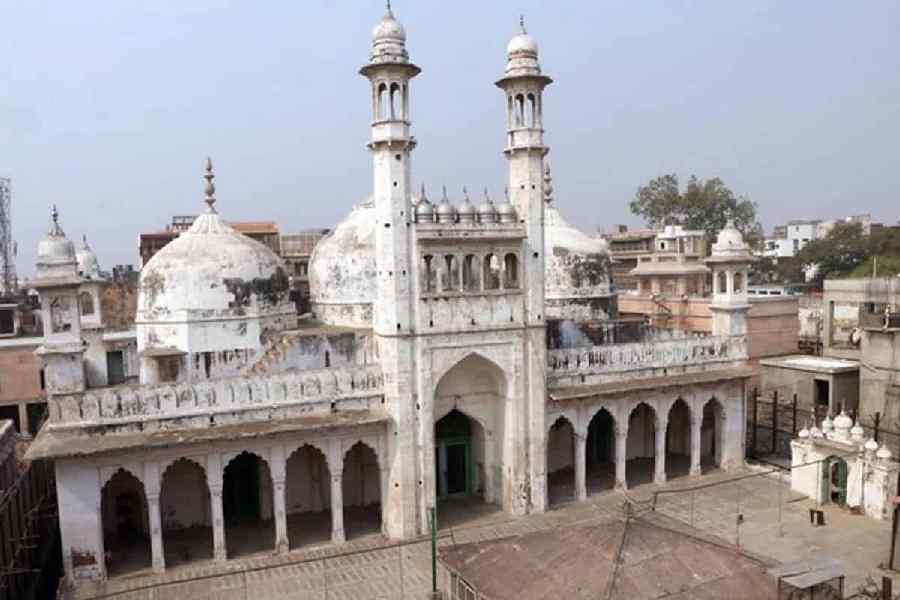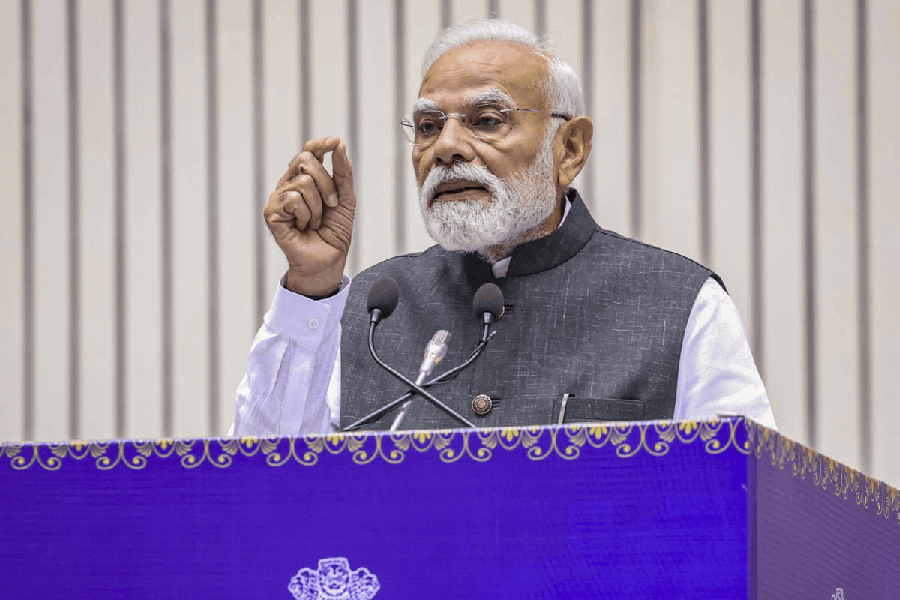Allahabad High Court on Tuesday dismissed pleas challenging the maintainability of a 1991 suit seeking the “restoration” of a temple where the Gyanvapi mosque now exists in Varanasi, observing that the “religious character” of a disputed place can only be decided by the court.
The high court dismissed all five suits of the Muslim side related to the violation of the Places of Worship (Special Provision) Act, 1991, and further survey of the mosque premises. The Hindus claim that the Gyanvapi mosque was built by demolishing a part of the adjoining Kashi Vishwanath temple during Aurangzeb’s time.
The petitions had been filed against the proceedings in a case lodged in a Varanasi court in 1991 by three citizens — Somnath Vyas, Ramrang Sharma and Harihar Pandey — on behalf of the “Ancient Idol of Swayambhu Lord Vishweshwar (Lord Shiva)” to seek possession of the Gyanvapi mosque premises, adjacent to the Kashi Vishwanath temple.
The court in its order on Tuesday said the plea of the Hindu side can’t be rejected because it was “not barred by provisions of Section 4 of the Act of 1991”.
The high court observed that the Gyanvapi compound had either a Hindu or a Muslim religious character.
“It can’t have a dual character at the same time. The religious character has to be ascertained by the Court considering pleadings of the parties, and evidence led in support of their pleadings”, it observed.
Directing both the parties to submit evidence before the Varanasi district court, the high court bench of Justice Rohit Ranjan Agarwal observed: “The Act does not define ‘religious character’, and only ‘conversion’ and ‘place of worship’ have been defined…. What will be the religious character of the disputed place can only be arrived by the competent Court after the evidence is led by the parties to the suit.”
The high court asked the district court to pass its order within six months and stated: “The scientific survey is already being conducted by the ASI. In case it is found that further survey is required, which has been left out in the survey conducted by the ASI, the Court below shall issue necessary directions to carry out further survey.”
The Muslim plaintiffs and their lawyers were not available for comment.
Vishnu Shankar Jain, a counsel for the Hindu side, said: “The ASI has already submitted its 1,500-page report in the Varanasi district court as evidence to prove that Gyanvapi is a temple used by the Muslims as a mosque. The court has also said that the entire Gyanvapi area may be surveyed again for further evidence if need be.”
Jain added: “So, both the pleas of the Anjuman Intezamia Masjid (the management committee of Gyanvapi) have been rejected by the high court....”
The Intezamia had pleaded in the Varanasi district court that the ASI survey was in violation of the Places of Worship Act and would also harm the old structure. But the ASI had said the structure wouldn’t be harmed.
The high court said on Wednesday: “The dispute raised in the suit is of vital national importance. It is not a suit between the two individual parties. It affects two major communities of the country…. In the national interest, it is required that the suit must proceed expeditiously and be decided with utmost urgency with the cooperation of both the contesting parties without resorting to any dilatory tactics.”
The high court said the lower court shall impose a fine on the parties in case their actions necessitated “unnecessary adjournment”.
“In case adjournment is granted, it will be at a heavy cost,” the high court told the Varanasi district court.
The Intezamia had told the court that once the Places of Worship Act was enforced on July 11, 1991, any suit or other proceedings with respect to conversion of the religious character of any place of worship existing as on August 15, 1947, shall abate.
The Intezamia had also argued that the survey could be done to supplement the evidence but in the present suit, there was an effort to create evidence.
The Hindus had in their 1991 petition said “the devotees of Lord Visheshwar, i.e. the Hindus at large, have every right to use it (Gyanvapi area) as a place of worship and to renovate and reconstruct their temple, adding it with the remaining portion of the temple structure…. and the entire Muslim community represented by the defendants have no right to occupy as their occupation is illegal.”
The Hindu petitioners had also claimed that the “entire property of the Gyanvapi compound is surrounded by an old boundary wall containing an ancient temple of Lord Vishweshwar together with four Mandaps and its ruins”.
Their argument was based on the verses of the Skand Purana of the Kashi Khand.
The Hindu litigants had also pointed out that the temple was constructed by King Vikramaditya about 2,050 years ago and the idol of Lord Vishweshwar had been consecrated.
“Due to religious antipathy, it was pulled down several times during Muslim rule in the country and the ruins of the temple exist at the place,” the Hindu petitioners had stated while acknowledging that the temple was rebuilt during the regime of Akbar by Narayan Bhatt, a devotee, with help of Raja Todarmal, finance minister of the Mughal emperor.
But Emperor Aurangzeb ordered its demolition on April 18, 1669, the Hindu litigants claimed.
“The aforesaid event of demolition has been mentioned in ‘Ma-Asir-i-Alamgiri’ printed in Arabic in 1871 by the Asiatic Society of Bengal,” the Hindu side told the court.
Section 4 of the Places of Worship (Special Provision) Act, 1991, says: “It is hereby declared that the religious character of a place of worship existing on the 15th day of August, 1947, shall continue to be the same as it existed on that day.”











